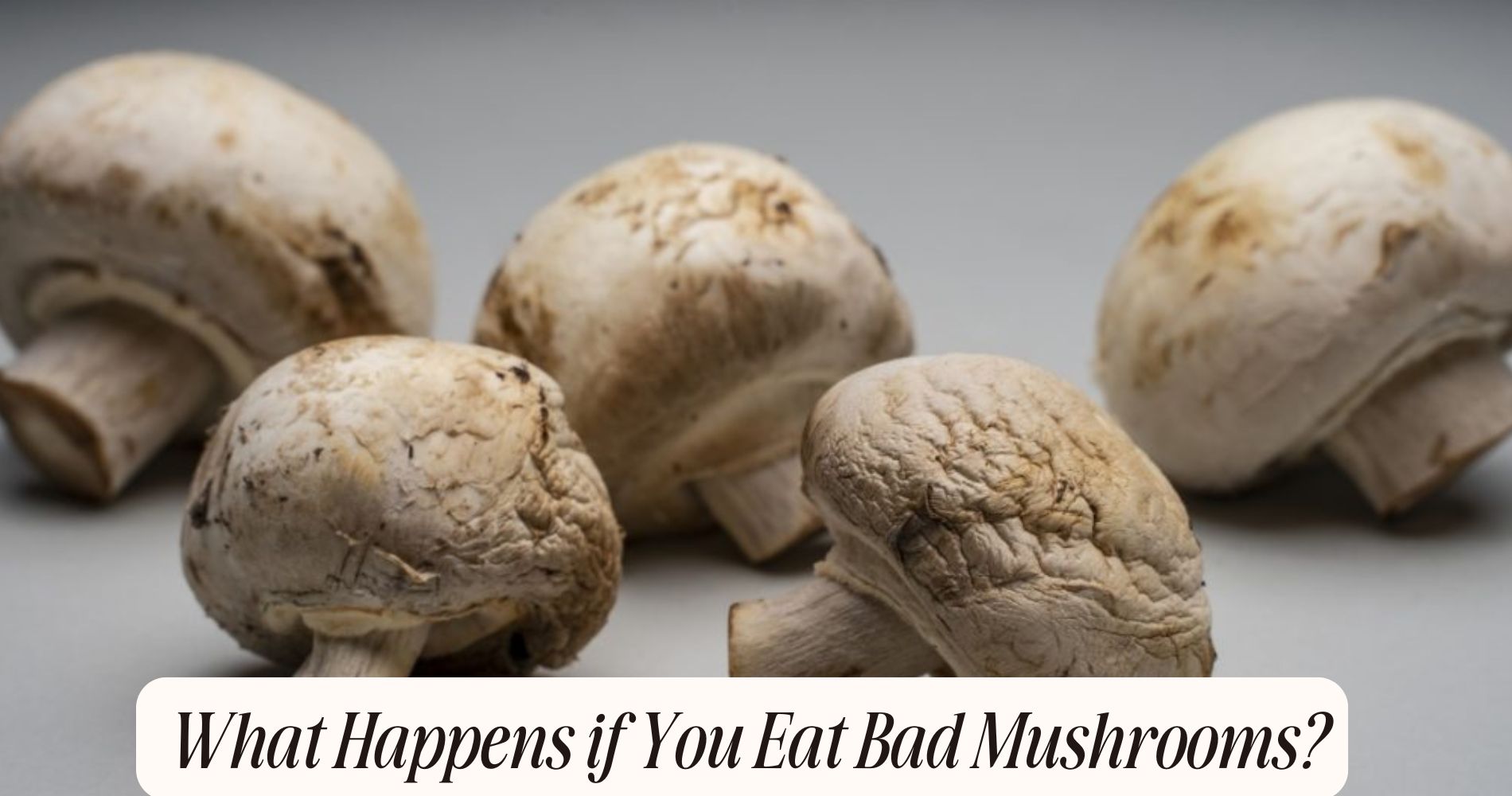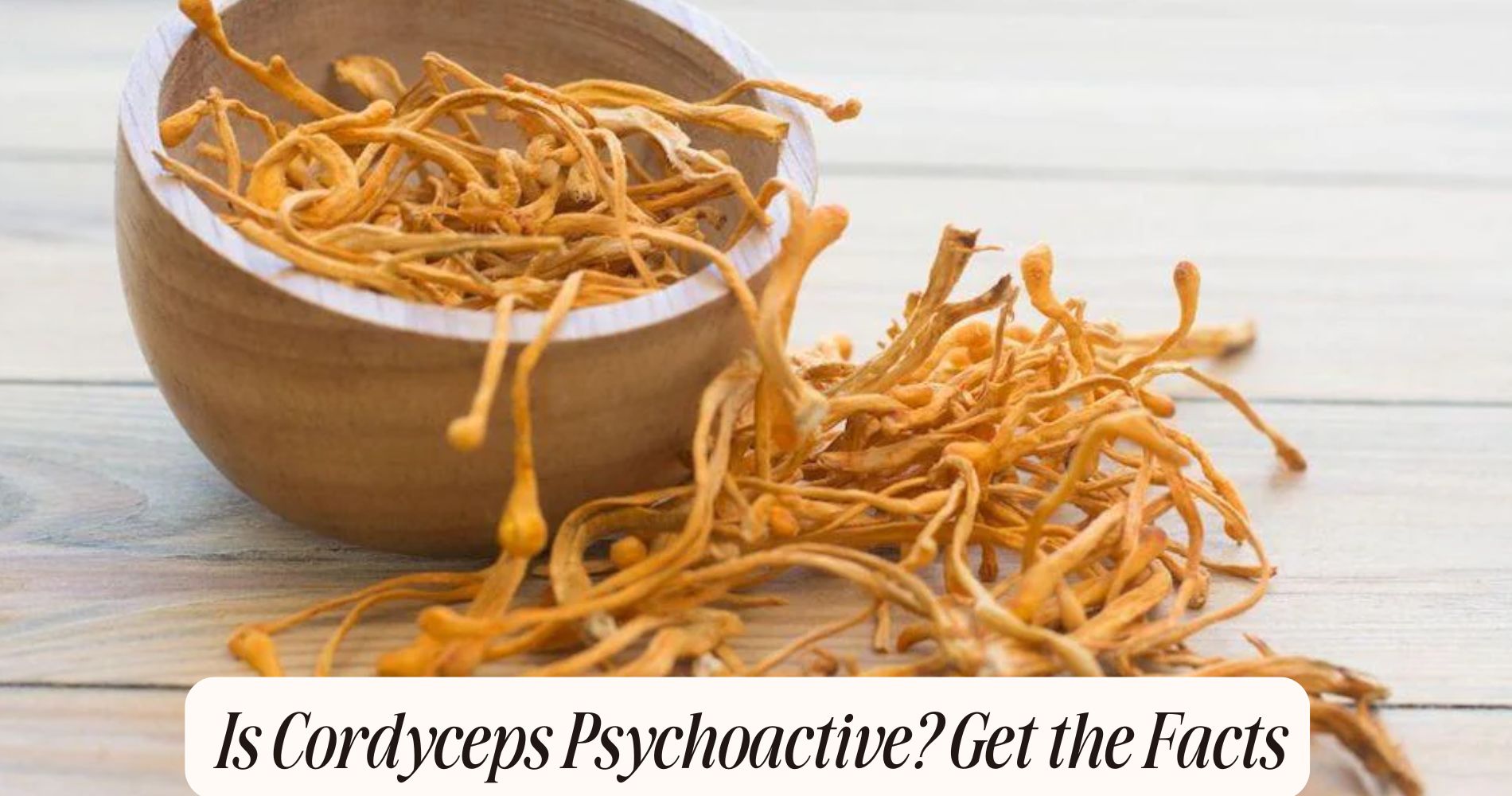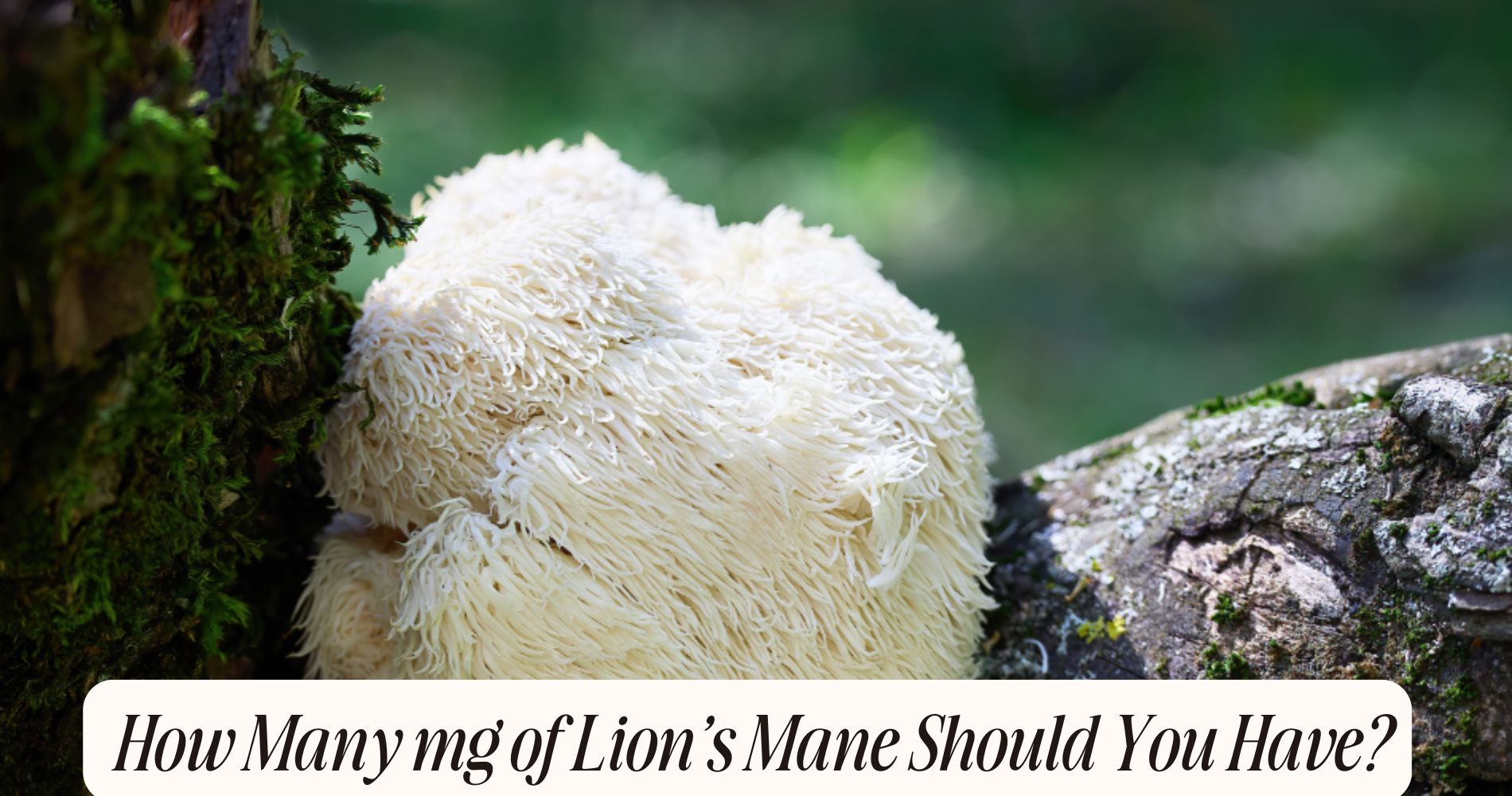
What Happens if You Eat Bad Mushrooms?
What happens if you eat bad mushrooms? If you eat bad mushrooms, you could face severe health consequences. Symptoms often appear within hours and include nausea, vomiting, and abdominal pain. In more serious cases, you might experience jaundice and seizures due to potential liver damage or neurological harm from toxic varieties like the Death Cap or false morels. Long-term effects can lead to chronic illnesses if untreated, making early medical intervention imperative. To avoid these risks, proper identification of mushrooms is essential. Understanding how to distinguish safe from toxic species is fundamental for your safety and well-being. There's much more to uncover about mushroom safety.
Types of Toxic Mushrooms
Mushrooms, while often celebrated for their culinary versatility, can also harbor dangerous toxins. When exploring mushroom classification, it's essential to recognize that many toxic varieties exist, posing significant risks if consumed.
For instance, the Amanita phalloides, commonly known as the Death Cap, contains potent toxins that can cause severe liver damage. Similarly, the Gyromitra esculenta, or false morel, harbors compounds that can lead to neurological damage.
Environmental effects play a fundamental role in the growth of these toxic species. Factors like soil composition, moisture levels, and surrounding flora can influence the presence of harmful compounds in mushrooms.

For example, mushrooms growing in contaminated soil may absorb heavy metals, increasing their toxicity.
Moreover, some mushrooms may appear similar to edible varieties, making identification challenging. You'll need to be cautious and well-informed when foraging or purchasing mushrooms.
Understanding the specific characteristics that distinguish toxic mushrooms from safe ones can save you from potential poisoning. Always remember, even experienced foragers can misidentify mushrooms, so it's best to err on the side of caution when it comes to consuming wild fungi.
Common Symptoms of Poisoning
Eating toxic mushrooms can lead to a range of symptoms, often varying in severity depending on the type of toxin ingested. One of the most common symptoms you might experience is gastrointestinal distress, which can manifest as nausea, vomiting, diarrhea, and abdominal pain. These symptoms typically occur within hours of consumption and can last for several days, depending on the toxin involved.
In addition to gastrointestinal issues, you may also encounter psychological effects. Some toxins can cause confusion, hallucinations, or mood swings, greatly impacting your mental state. This can be particularly alarming, as it may lead to disorientation and impaired judgment.
It's essential to recognize these symptoms early, as they can escalate quickly. While some individuals may recover with minimal intervention, others might require medical treatment to manage severe reactions.
If you suspect you've ingested toxic mushrooms, seeking immediate medical attention is critical. Remember, prompt action can make a considerable difference in outcomes related to mushroom poisoning. Always err on the side of caution when it comes to wild mushrooms, as their effects can be unpredictable and dangerous.
Short-Term Effects of Consumption
When you consume bad mushrooms, the short-term effects can be alarming and vary widely based on the specific toxins present. Many individuals experience immediate gastrointestinal distress, which can manifest as severe cramping, diarrhea, and vomiting. These symptoms often arise within hours of ingestion, making it vital to seek medical attention promptly.
Short-term nausea is one of the most common reactions, and it can range from mild discomfort to debilitating sensations that hinder your ability to function. Depending on the type of mushroom consumed, additional symptoms may include headaches, dizziness, and fatigue.

In more severe cases, individuals may endure hallucinations or confusion due to neurotoxic compounds found in certain varieties.
It's essential to understand that the onset of symptoms doesn't always correlate with the amount of mushroom consumed; even a small quantity can trigger intense reactions. As you navigate these symptoms, remember that hydration is vital. Drinking plenty of fluids can help mitigate some discomfort, but professional medical intervention is often necessary to address the toxins effectively.
Always err on the side of caution and consult a healthcare provider if you suspect mushroom poisoning.
Long-Term Health Risks
Consuming bad mushrooms can lead to serious long-term health risks that may not be immediately apparent. Many people underestimate the consequences of eating toxic varieties, thinking they'll recover quickly. However, certain toxins can inflict lasting damage on your body, particularly your liver.
Liver damage is one of the most concerning outcomes of consuming poisonous mushrooms. This important organ plays a pivotal role in detoxification, metabolism, and nutrient storage. If you ingest harmful substances, you might face chronic illnesses, including liver failure or cirrhosis, which can develop over time. Symptoms may initially seem mild, but they can escalate into severe complications that could require a transplant or lead to death.
Moreover, some mushroom toxins can disrupt other bodily functions, potentially leading to conditions that persist long after the initial ingestion. For instance, neurological damage can occur, affecting your cognitive abilities and quality of life.
If you suspect you've consumed bad mushrooms, it's crucial to seek medical attention immediately. Early intervention can mitigate some of the risks, but understanding the potential long-term health consequences helps you make informed decisions about mushroom consumption in the future.
Identifying Edible vs. Toxic Varieties
When foraging for mushrooms, knowing the difference between edible and toxic varieties is essential for your safety.
Familiarizing yourself with common toxic types, like the Amanita phalloides, can help you avoid dangerous mistakes.
Utilizing safe identification techniques guarantees you make informed choices before consuming any wild mushrooms.
Common Toxic Mushroom Types
Identifying edible mushrooms from their toxic counterparts can be a challenging task, as many poisonous varieties closely resemble safe ones. One common toxic type is the Amanita phalloides, or death cap, which can easily be mistaken for edible mushrooms like the paddy straw mushroom. Consuming just a small amount of this mushroom can lead to severe liver damage or even death.
Another dangerous variety is the Gyromitra esculenta, often referred to as the false morel. While some believe it's safe after proper cooking, it contains potent toxins that can cause gastrointestinal distress and neurological symptoms.
Mushroom myths often lead people to believe that certain colors or shapes are indicators of edibility, but this isn't a reliable method.
The poisonous Inocybe and Cortinarius species are also worth noting. Both have distinct features that can mislead foragers, as they may mimic edible mushrooms while harboring highly toxic compounds.
Always remember, just because a mushroom looks appealing doesn't mean it's safe to eat. Knowledge is key in distinguishing between edible mushrooms and their toxic relatives, so approach wild foraging with caution and respect for the risks involved.
Safe Identification Techniques
Clarity in mushroom identification is essential for anyone interested in foraging safely. To distinguish between edible and toxic varieties, you should utilize reliable foraging guides and visual aids.
Start by familiarizing yourself with key characteristics of mushrooms, such as cap shape, gill structure, and stem features. Pay close attention to color variations, as many toxic mushrooms closely resemble safe ones.
When using foraging guides, look for those that include clear photographs and detailed descriptions. This will help you compare the mushrooms you encounter with authoritative sources.

Make note of habitat and seasonality, as certain mushrooms thrive in specific environments and times of the year.
If you're unsure about a mushroom's identity, it's best to err on the side of caution. Avoid consuming any mushroom you can't positively identify.
Joining local foraging groups can also enhance your skills through shared experiences and collective knowledge.
First Aid for Mushroom Poisoning
If you suspect mushroom poisoning, recognizing the symptoms is essential for effective first aid.
Common signs include nausea, vomiting, and abdominal pain, which can manifest within hours of ingestion.
Immediate treatment steps, such as contacting poison control or seeking medical attention, are important to mitigate the potential risks associated with toxic mushrooms.
Identifying Poisonous Symptoms
Mushroom poisoning can occur unexpectedly, and recognizing the symptoms is essential for effective first aid. When you suspect mushroom poisoning, it's important to monitor your condition closely.
Initial symptoms can appear anywhere from a few minutes to several hours after ingestion, depending on the type of mushroom consumed. Common symptoms include nausea, vomiting, diarrhea, abdominal pain, and confusion.
You should assess the severity of your symptoms as they develop. Mild symptoms may only require basic management, but severe symptoms like jaundice, seizures, or difficulty breathing indicate a serious reaction.
The duration of symptoms can vary greatly; some may resolve quickly, while others can progress to life-threatening conditions over days.
Documenting the symptom duration and severity assessment can be essential information for healthcare professionals. If symptoms worsen or you experience unusual reactions, don't hesitate to seek medical attention.
Remember that timely recognition and reporting of symptoms can greatly influence treatment outcomes. Always err on the side of caution when dealing with potential mushroom poisoning.
Immediate Treatment Steps
Recognizing symptoms of mushroom poisoning is just the first step; knowing how to respond is equally important. If you suspect mushroom poisoning, don't wait. Your first action should be to call emergency services. Time is essential in these situations, as symptoms can escalate quickly.
While waiting for help, don't induce vomiting or take any home remedies without professional guidance. Some home remedies may do more harm than good, especially if the type of mushroom consumed is unknown. Instead, keep the person calm and still, as movement can spread toxins in the body more rapidly.
If possible, gather any remaining mushrooms for identification, but don't waste time on this if it delays seeking help. Providing medical personnel with this information can greatly improve treatment outcomes.
Once emergency services arrive, follow their instructions closely. They may initiate emergency procedures, such as administering activated charcoal to limit toxin absorption or providing supportive care.
When to Seek Medical Help
Knowing when to seek medical help after consuming bad mushrooms can be crucial for your health. If you suspect you've ingested toxic mushrooms, don't delay. Time is important in cases of mushroom poisoning, as certain toxins can cause severe damage to your liver, kidneys, or central nervous system.
Be aware of risk factors that may increase your chances of experiencing severe symptoms. These include your age, overall health, and the amount of mushrooms consumed.
If you notice any unusual symptoms—such as nausea, vomiting, diarrhea, abdominal pain, confusion, or hallucinations—it's essential to seek medical intervention immediately.
In some cases, symptoms might take hours or even days to manifest, so remain vigilant even if you initially feel fine. If you identify the mushroom species and it's known to be toxic, inform medical professionals, as this information can greatly impact treatment options.
Remember that not all mushroom-related symptoms are immediate, and the absence of immediate discomfort doesn't guarantee safety. If you have any doubts about your condition, err on the side of caution and consult a healthcare provider promptly. Your health is worth that immediate action.
Prevention Tips for Foraging
Foraging for wild mushrooms can be a rewarding experience, but it also comes with significant risks if you're not careful. To minimize these risks, start by equipping yourself with the right foraging tools. A good field guide, preferably one specific to your region, will help you accurately identify edible mushrooms.
Don't forget a sturdy basket to collect your finds, as plastic bags can cause mushrooms to spoil quickly.
Before heading out, familiarize yourself with local regulations regarding mushroom foraging. Some areas may have restrictions on foraging in protected parks or specific habitats. Knowing these rules helps you avoid fines and preserves the environment for future foragers.
When you're out in the field, trust your instincts but also verify your findings. If you're unsure about a mushroom's edibility, it's best to err on the side of caution and not consume it. Additionally, foraging with an experienced guide can enhance your knowledge and safety.
Lastly, always wash and cook mushrooms thoroughly before consumption. This can help remove potential toxins or contaminants.
Enjoy Mushroom Benefits Safely with SUPER MUSHROOM GUMMIES
Worried about the risks of bad mushrooms? Skip the concern and enjoy the benefits of mushrooms safely with SUPER MUSHROOM GUMMIES by Well Gummies! Each gummy is packed with 10 functional mushrooms, providing immune support, mental clarity, and natural energy—all without any worries about spoilage or toxins. These vegan-friendly gum chews offer calm energy and sharper focus, helping you stay balanced throughout the day, without jitters or crashes.
With a delicious wild berry flavor, they taste just like candy, making it easy to nourish your body and mind daily. Enjoy peace of mind and powerful wellness with SUPER MUSHROOM GUMMIES!
Frequently Asked Questions
Can Cooking Bad Mushrooms Make Them Safe to Eat?
Cooking bad mushrooms won't eliminate mushroom toxicity. While certain cooking methods can reduce some harmful compounds in other foods, they can't make toxic mushrooms safe. It's best to avoid questionable mushrooms entirely.
Are There Any Home Remedies for Mushroom Poisoning?
If you suspect mushroom poisoning, don't rely on home remedies. Instead, focus on proper mushroom identification and prevention tips to avoid risks. Seek immediate medical attention for effective treatment and to guarantee your safety.
How Quickly Do Symptoms Appear After Eating Bad Mushrooms?
Symptoms of mushroom toxicity can appear within minutes to several hours after ingestion, depending on the type of mushroom. Understanding the symptom timeline helps you identify potential poisoning and seek medical attention promptly.
Can Pets Get Sick From Eating Toxic Mushrooms?
Yes, pets can get sick from toxic mushrooms. To prevent pet poisoning, make certain you're familiar with toxic mushroom identification and monitor your pets during walks, especially in areas where mushrooms grow. Their health depends on your vigilance.
What Should I Do if I Suspect Mushroom Poisoning?
If you suspect mushroom poisoning, immediately assess mushroom identification and monitor for poisoning symptoms like nausea or confusion. Seek medical assistance promptly, providing details about the mushroom, as timely intervention can be essential for recovery.
Conclusion
In summary, consuming bad mushrooms can lead to serious health risks, ranging from mild gastrointestinal discomfort to severe organ damage or even death. It's essential to differentiate between edible and toxic varieties and to familiarize yourself with the symptoms of poisoning. If you suspect mushroom poisoning, seek medical help immediately. By understanding the dangers and taking proper precautions while foraging, you can enjoy mushrooms safely and avoid the potentially life-threatening consequences of consuming the wrong type.




